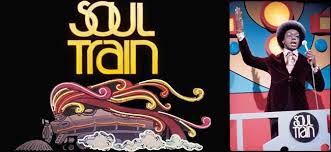Even if you’ve never read the quote, you’ve no doubt seen the meme, in all of its arts-affirming, damn the torpedoes glory. Just one small detail: it isn’t true.
I am referring to the story that goes as follows, and here I’ll quote an op-ed piece from TheHill.com, dated February 19, 2017:
At the height of WWII, Winston Churchill was challenged to defend a budget that called for an increase in arts funding.
“How can you propose this at a time of extreme national crisis?” asked one member of Parliament.
Churchill replied, “I do it, sir, to remind us what we are fighting for.”
That’s one of the longer versions of the account. You may have seen it as, “During WWII, Churchill was asked to cut funding for the arts. He replied, ‘Then what are we fighting for?’,” or, “When Churchill was asked to cut arts funding in favour of the war effort, he simply replied, ‘Then what are we fighting for?’”
There are countless iterations.
They are all fake history, recycled endlessly by arts advocates because the story fits a narrative we want to tell, because support of the arts in the face of the horror of the Holocaust and World War II is just so perfect. So it figures that it’s too good to be true.
Many times when you see this quote, you’ll even see a source. But those sources never lead you to a piece of primary research proving that Churchill said it, or a video clip of him actually saying it. Instead, it’s one big echo chamber, in which people cite other people who shared the quote, none of whom provide a footnote as to its veracity.
That said, a bit of online searching will bring you to generally reliable sources that claim to have researched the quote and found it wanting. Now to be fair, there’s a certain circularity in the debunking as well. Snopes.com has a piece dated just weeks ago, which cites historian Richard Langworth debunking the quote in a 2009 blog post, “Safeguarding The Arts.” The recent inquiry from Snopes prompted Langworth to refashion his answer under the banner of The Churchill Project at Hillsdale College in Michigan, but save for replacing who asked the question of him, his answer is consistent.
Andrew Eaton, writing in The Scotsman in 2011, allowed that the provenance of the quote was in dispute. An article from The Conversation.com says the quote is fake, sourcing it to a piece in the Village Voice in 2008, but their source, if you follow the links, is once again Langworth. Fortunately, Snopes also checked with the International Churchill Society, where a representative declared the statement “quite bogus.”
Using this quote in fighting to stave of arts cuts in the US is, ultimately, a disservice to the effort. Why? Because if the quote cannot be unequivocally verified, then its deployment counts as fake news. That opens up anyone who uses it to having all of their arguments, no matter how valid the others may be, dismissed out of hand. The very people who are quick to brandish the pejorative “fake facts” against things with which they simply disagree will have a field day with claims that are demonstrably false, even if veracity isn’t central to their own arguments. One anti-liberal bias site, also looking to Langworth, took this on in 2012 when Chris Matthews cited the quote, so this isn’t exactly flying under the radar.
This should not discount the idea that Churchill didn’t support the arts. Reliable sources quote him as saying, at an April 30, 1953 Royal Academy Banquet, “The arts are essential to any complete national life. The State owes it to itself to sustain and encourage them…Ill fares the race which fails to salute the arts with the reverence and delight which are their due.”
One must wonder why the British Churchill, who died at almost 90 years old in 1965, perseveres as the go-to defender of the arts in America today. Looking closer to home, even if the remarks were the work of a speechwriter, President John F. Kennedy, whose White House regularly welcomed artists to perform, has a series of quotes about the arts emblazoned on the rear balcony of The Kennedy Center, all suitable for memeing.
“This country cannot afford to be materially rich and spiritually poor.”
“I look forward to an America which will reward achievement in the arts as we reward achievement in business or statecraft.”
“To increase respect for the creative individual, to widen participation by all the processes and fulfillments of art — this is one of the fascinating challenges of these days.”
“There is a connection, hard to explain logically but easy to feel, between achievement in public life and progress in the arts.”
As mentioned previously, the specious Churchill quote made perhaps its most recent appearance in an op-ed at TheHill.com. Regrettably, the authors of the piece are Earle I. Mack is chairman emeritus of the New York State Council on the Arts, Randall Bourscheidt is president emeritus of the Alliance for the Arts, and Robert L. Lynch is president and CEO of Americans for the Arts. A Google search on their version of the quote reveals only a single match, namely their article. Their use doesn’t even mirror other faulty citations.
By all means, let’s write our own words in defense of the arts, and arts funding, and let’s cite the very best comments made by others in support of that case. But unless someone produces irrefutable proof that Churchill said what he is so often quoted as saying about “what are we fighting for,” it’s time to put it away for good. Opposing the truism advanced in The Man Who Shot Liberty Valance, we cannot afford to print the legend, we must stand with the objective truth.
P.S. If anyone actually can prove that the “what are we fighting for” story is verifiably true, please shout the proof out loudly.




